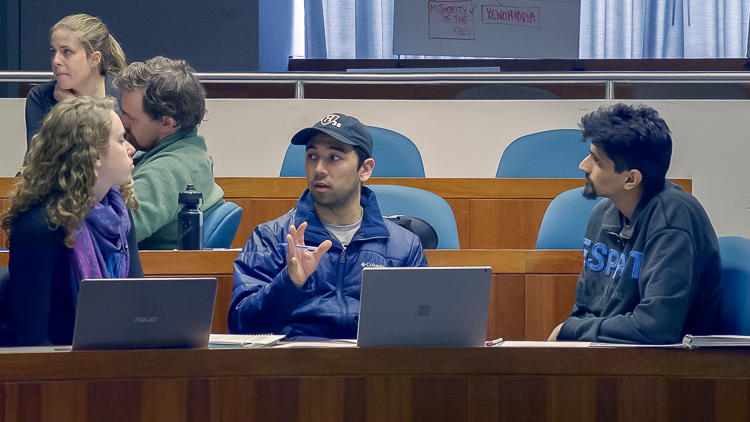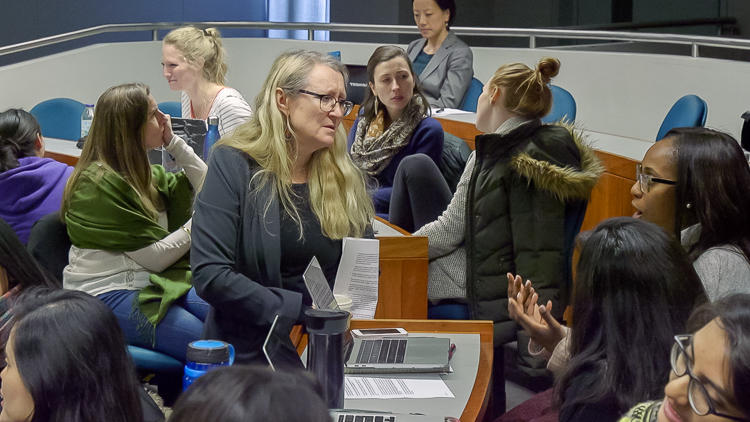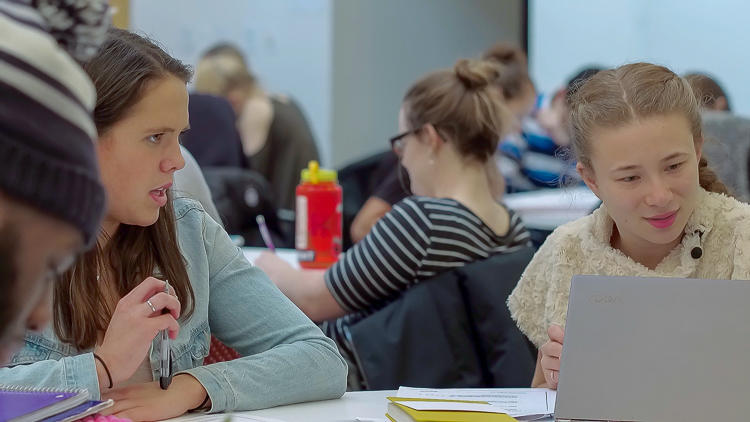To get students comfortable speaking in larger groups, discussion leaders might choose to start the conversation in smaller groups first to provide a safe environment for students to gain comfort and confidence while testing out ideas with their peers. In this video, Christina “V” Villarreal discusses how she breaks her class into smaller groups when she wants to draw attention to certain material, or when discussion topics require vulnerability from students.
Using small groups to intensify focus and provide safer spaces
Instructor
Christina “V” Villarreal, Lecturer on Education
Student Group
Graduate
School
Harvard Graduate School of Education
Course
Ethnic Studies and Education
Group Size
23 students
- Be clear about the outcomes you expect from small-group work for timeframe allotted. Tell students up-front what you expect they will discuss and where you’ll pick up from when you bring the conversation back together.
- Decide whether self-selected groups or heterogeneous groups are most appropriate given the content discussed. Each has advantages: Students might feel more comfortable talking first in groups with people they already know, but they might hear different ideas from students with whom they haven’t already worked.
- Rather than rehashing the same conversation students had in small groups, use whole-group time to build on key learning or insights gleaned in small groups
- If you are unsure how comfortable students are discussing a particular topic, you might take a quick “eyes closed, hands up” poll to determine whether students would prefer to start in small groups or move straight into a whole group discussion
- Researchers investigating team-based learning with pharmacy students in their first year of professional training found that students tend to have a more favorable perception of team-based learning than traditional lecture when team based learning is introduced early on (Frame et al., 2015)
- When students are taught with a range of structured small group work activities, lower-achieving students perform better on tasks requiring recall of factual information, and higher-achieving students perform better on tasks requiring application and evaluation of course concepts (Simonson, 2014)
- Researchers investigated the experiences of LGBTQIA (lesbian, gay, bisexual, transgender, queer, intersex and asexual) undergraduates in a biology classroom that incorporated active learning. In active learning courses, small group discussions can be incorporated, requiring students to more actively engage with their peers and instructors. Researchers suggest that instructors consider instructional practices to overcome potential challenges to make their courses more inclusive (Cooper & Brownell, 2016).
- Pollock and colleagues found higher levels of participation in small group discussions compared to large group discussions. Furthermore, previous academic achievement and ethnic background had less of an influence on participation in small group discussions (2011).
- The University of Chicago’s Center for Teaching offers helpful tips in “Planning for Small Groups”
- Harvard’s Derek Bok Center for Teaching & Learning offers advice for setting up effective group work




